Growing fruit trees in containers has become increasingly popular among gardeners who have limited space or want better control over their plant’s growth. One of the best fruit trees for container gardening is the White Guava — a tropical delight known for its aromatic fragrance, smooth white flesh, and sweet flavor. If you’ve ever wanted to grow guava but don’t have a large yard, container growing is the perfect solution.
In this comprehensive guide, we’ll walk you through how to plant and grow a White Guava in a container step-by-step, explain why container cultivation is beneficial, and share practical care tips to help your plant thrive and fruit abundantly.
Why Grow White Guava in a Container?
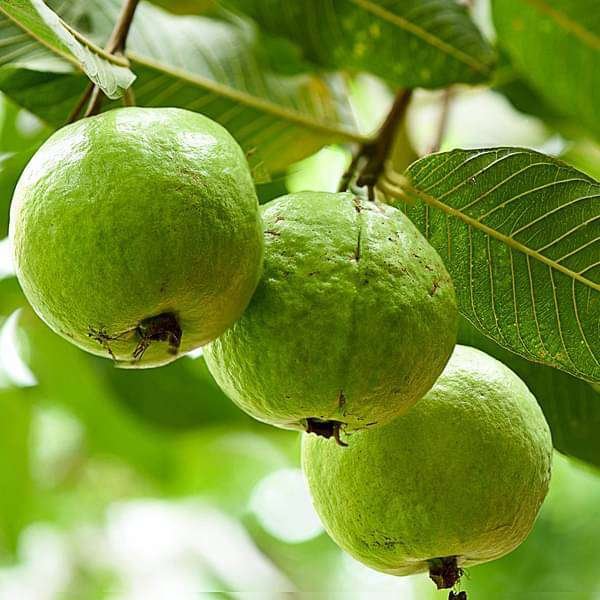
White Guava (Psidium guajava) is a tropical fruit tree that naturally grows quite large, but it adapts surprisingly well to container life. There are several advantages to planting your White Guava in a pot rather than directly in the ground:
- Space Efficiency:
Perfect for urban gardeners, patios, balconies, or small backyards. Even if you live in an apartment, you can still enjoy growing this tropical fruit. - Mobility:
Containers allow you to move your guava tree to the best spots for sunlight during different seasons, or protect it from frost and strong winds. - Soil Control:
You can customize the soil mix for better drainage and nutrient balance, reducing the risk of root rot and disease. - Pest and Disease Management:
Growing in containers makes it easier to monitor for pests and apply organic treatments quickly if needed. - Faster Fruit Production:
Potted guavas often fruit earlier than ground-planted ones because of the controlled environment and stress-free root conditions.
Step 1: Choosing the Right Container
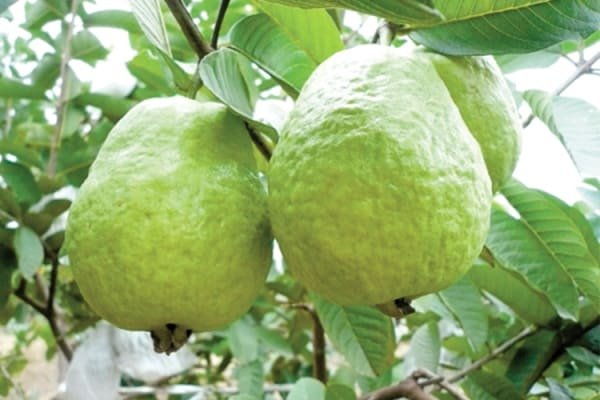
The first and most important decision is selecting the correct pot.
- Size: Start with a 20- to 25-gallon container (around 18–24 inches in diameter). This provides enough space for the guava’s root system to expand without becoming root-bound too quickly.
- Material: Choose plastic, clay, or fiber containers with proper drainage holes. Plastic pots retain moisture better, while clay pots provide more breathability.
- Drainage: Ensure your pot has at least 3–5 large drainage holes. Guava roots do not tolerate waterlogging.
You can also elevate the pot slightly on bricks or pot feet to encourage water to flow out freely.
Step 2: Preparing the Perfect Soil Mix
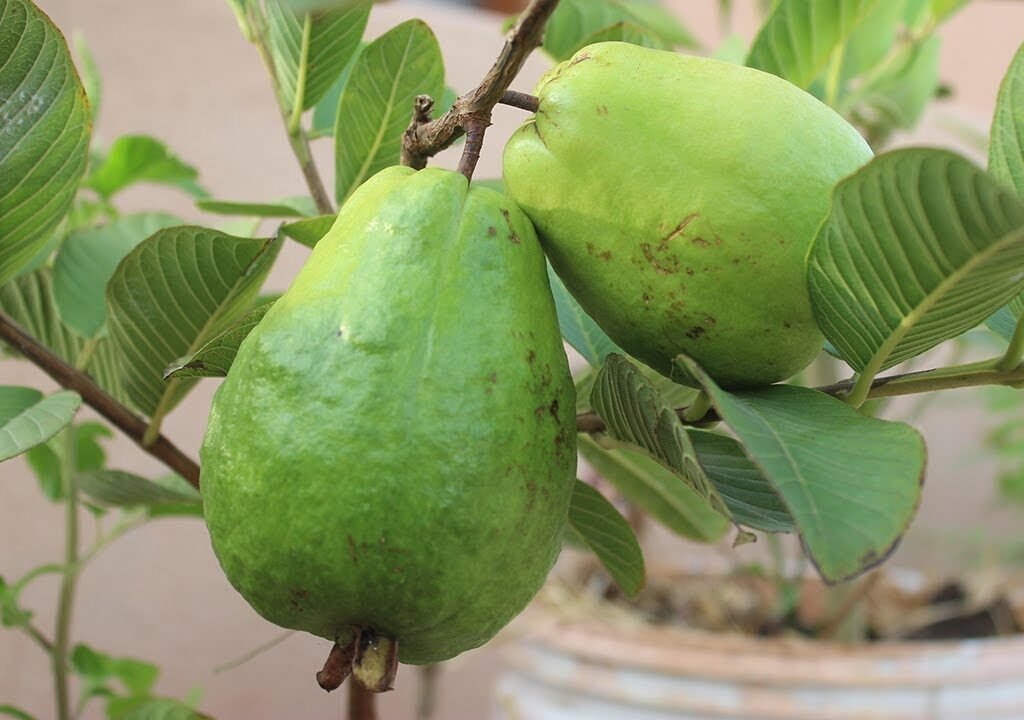
Guava trees love well-draining, slightly acidic soil rich in organic matter. A heavy or compact mix can suffocate roots, so use a blend that’s light and airy.
Here’s an ideal soil mix recipe for potted guava:
- 40% garden soil or compost
- 30% coco peat or peat moss
- 20% perlite or coarse sand
- 10% well-rotted cow manure or organic compost
Mix everything thoroughly before filling the pot. Add a layer of small pebbles or broken pottery at the bottom to further improve drainage.
Step 3: Selecting and Planting the White Guava
When choosing your plant, opt for a healthy nursery sapling or grafted guava. Grafted varieties mature faster and produce fruit earlier than seed-grown ones.
Planting Steps:
- Fill your pot about halfway with the soil mix.
- Place the guava plant in the center, keeping the root ball intact.
- Adjust the soil level so that the top of the root ball sits about 1 inch below the rim of the container.
- Fill around the roots with the remaining soil and gently press it down.
- Water thoroughly until it begins to drain out of the bottom holes.
Tip: After planting, add a layer of organic mulch (like dried leaves, straw, or coco husk) to help retain moisture and regulate temperature.
Step 4: Light and Temperature Requirements
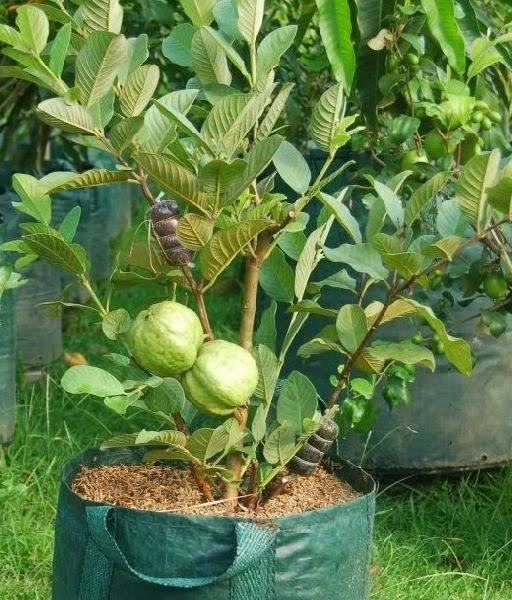
Guava is a sun-loving tropical plant that thrives in 6–8 hours of direct sunlight daily. If you’re growing indoors or on a balcony, place it near the sunniest window or outdoors during the day.
Ideal temperature range: 65°F to 95°F (18°C–35°C)
Protect your guava from frost by bringing it indoors during cold months or covering it with a frost cloth.
Step 5: Watering Your White Guava Plant
Watering is key to healthy growth, but balance is crucial. Guavas dislike soggy soil, yet they should never dry out completely.
Watering schedule:
- Water deeply once or twice a week during the growing season.
- Reduce watering slightly in winter when growth slows down.
- Always check the top 2 inches of soil — if it feels dry, it’s time to water.
To prevent fungal issues, water the base of the plant rather than the leaves.
Step 6: Fertilizing for Optimal Growth
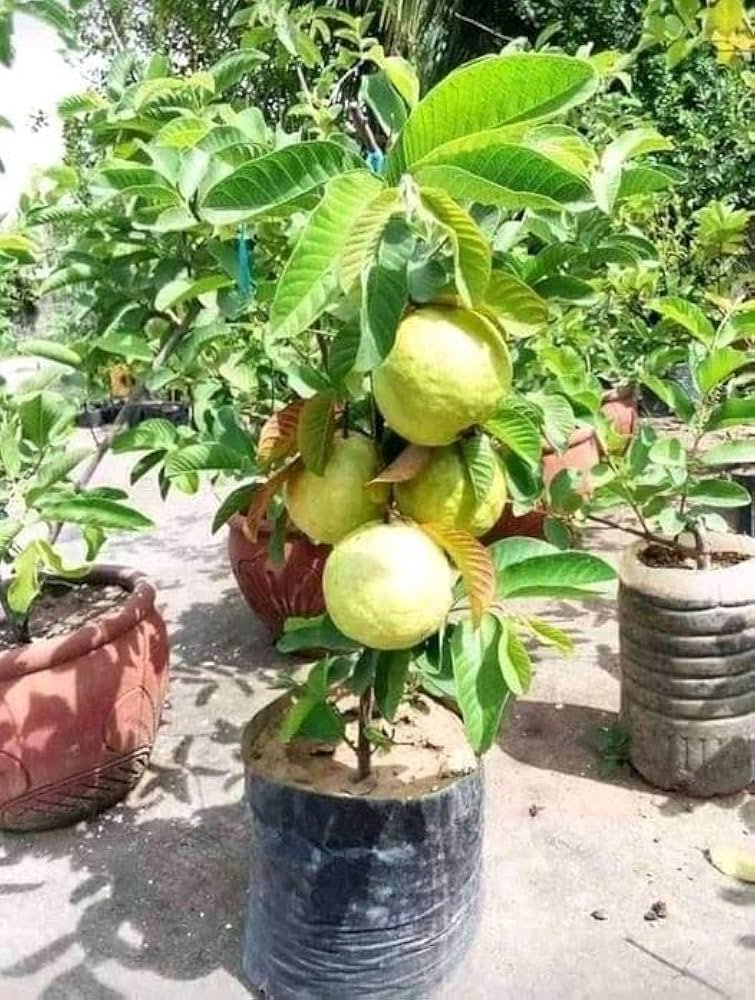
Container-grown guava plants rely entirely on you for nutrients. Feed your plant regularly to encourage lush growth and fruiting.
Fertilizer schedule:
- Use a balanced fertilizer (10-10-10 NPK) every 4–6 weeks during spring and summer.
- Alternatively, apply organic compost, seaweed extract, or vermicompost every month.
- During the flowering and fruiting stage, supplement with potassium-rich fertilizer to improve fruit sweetness and size.
Tip: Flush the soil every few months with plain water to remove salt buildup from fertilizers.
Step 7: Pruning and Maintenance
Regular pruning helps shape your tree, improve air circulation, and increase fruit yield.
How to prune:
- Trim away any dead or weak branches.
- Cut off shoots growing inward or crossing each other.
- After fruiting, lightly prune to maintain shape and encourage new growth.
Container guava trees can be maintained at 4–6 feet tall for easy management and harvesting.
Step 8: Common Pests and How to Handle Them
Even in containers, guava plants may attract certain pests like aphids, mealybugs, and fruit flies.
Organic pest control tips:
- Spray neem oil or insecticidal soap once every two weeks during active growth.
- Introduce natural predators like ladybugs if available.
- Remove fallen leaves or overripe fruits promptly to prevent infestations.
Keep your plant well-fed and healthy — strong plants naturally resist most pest problems.
Step 9: Flowering and Fruiting Stage
White Guava trees typically flower within 12–18 months of planting (sometimes earlier for grafted plants). The small white blossoms give way to round fruits that mature in about 4–6 months.
To encourage fruiting:
- Maintain consistent watering and sunlight exposure.
- Avoid over-fertilizing with nitrogen during flowering, as it may promote leaves over fruit.
- Hand-pollinate flowers using a soft brush if you’re growing indoors or in an area with few pollinators.
Once mature, the guava fruits turn slightly soft and emit a gentle, sweet aroma — a sign that they’re ready to harvest!
Step 10: Repotting and Long-Term Care
Your White Guava tree will eventually outgrow its container. Every 2–3 years, check the roots — if they start circling the pot, it’s time to repot.
Repotting steps:
- Choose a container one size larger.
- Gently loosen the root ball and trim any long, coiled roots.
- Replant using fresh soil mix and water thoroughly.
Continue regular pruning and feeding, and your guava tree can live productively for over 10 years in a container!
Final Thoughts: Why Container Guava Growing Is Worth It
Planting a White Guava in a container is not just practical — it’s deeply rewarding. You get the joy of nurturing a tropical fruit tree right on your patio or balcony and the satisfaction of harvesting fresh, homegrown guavas with rich flavor and nutrition.
Whether you’re an urban gardener or simply love experimenting with fruit trees, this method offers flexibility, beauty, and productivity. With a little care, sunlight, and patience, your potted White Guava will thrive — producing delicious fruits year after year.
In summary:
- Choose a large, well-drained pot.
- Use light, organic-rich soil.
- Give 6–8 hours of sunlight daily.
- Water deeply but avoid waterlogging.
- Feed and prune regularly for best results.
By following these simple steps, you’ll enjoy the tropical sweetness of homegrown White Guava — all from the comfort of your own container garden.
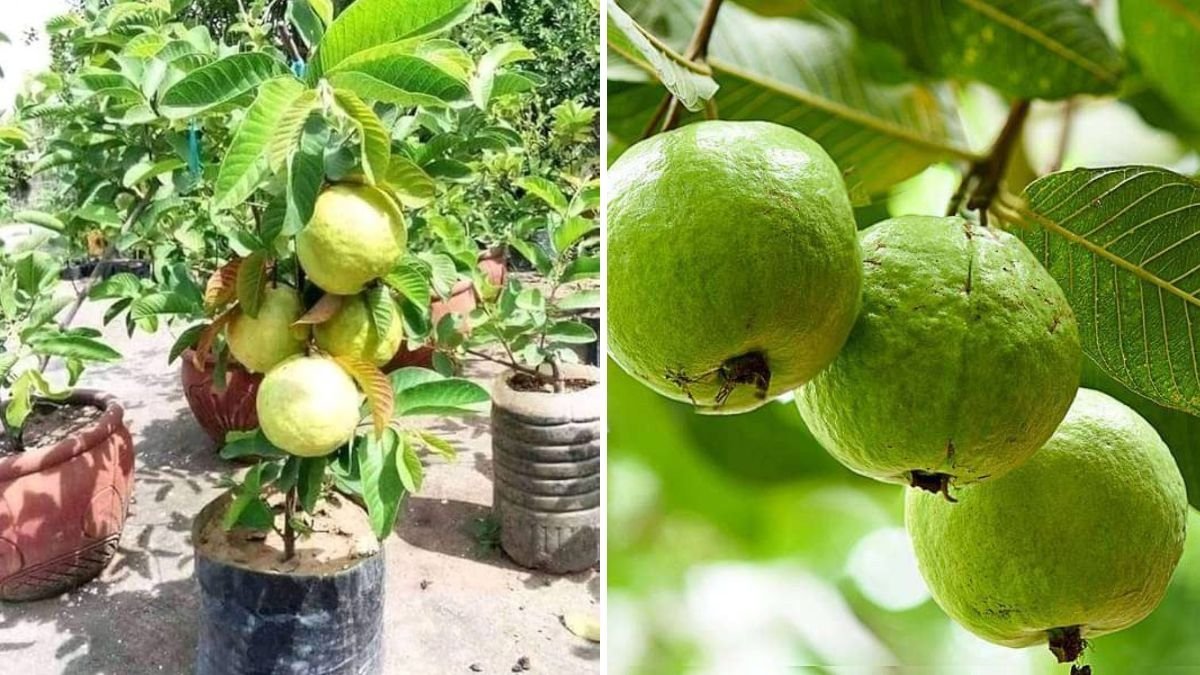
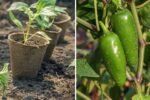



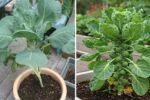
Leave A Comment